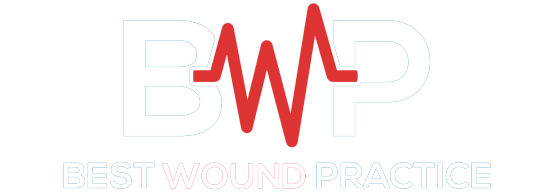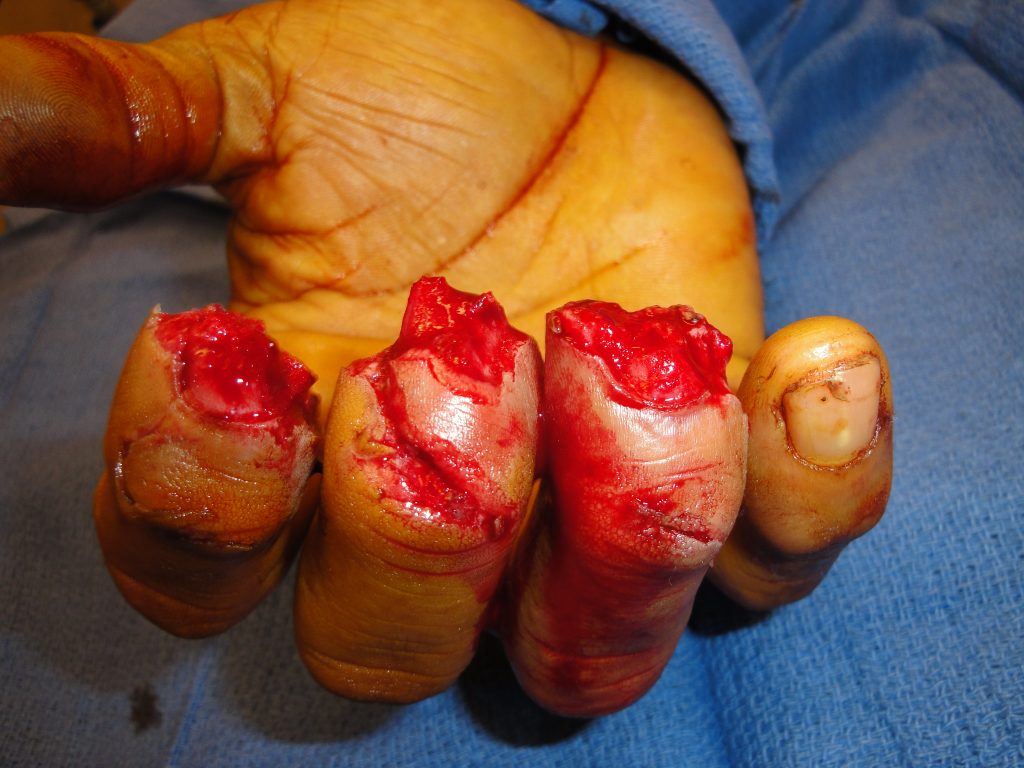Multiple Fingertip Amputations
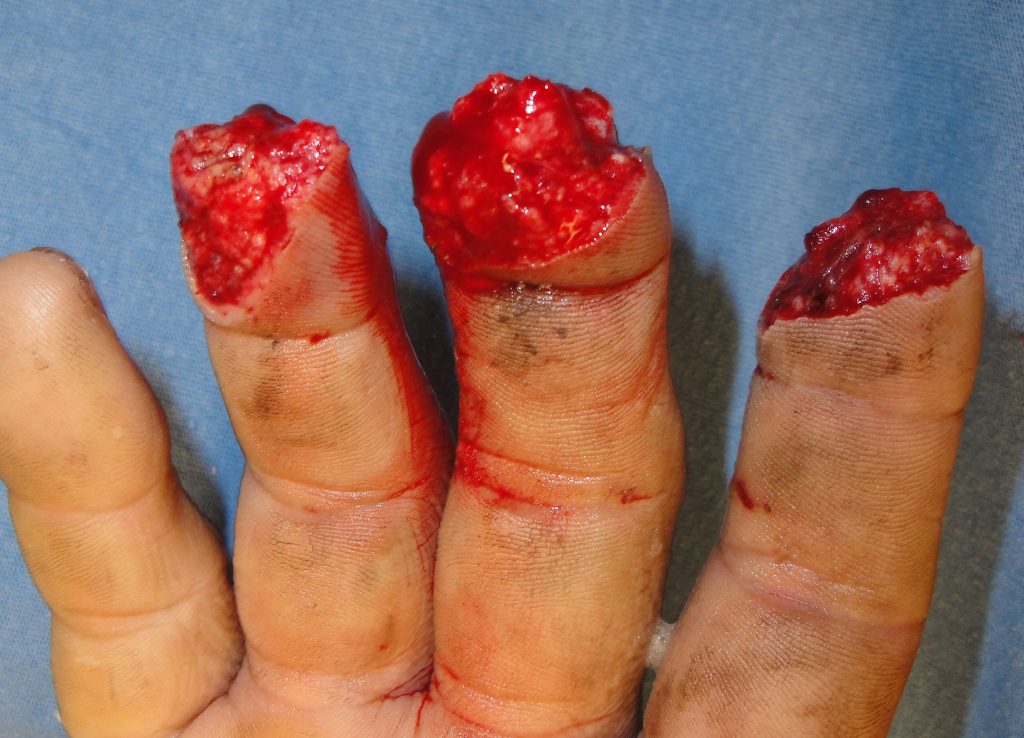
Fig.1. Right Index. Long, and Ring Fingertip injuries at the time of injury
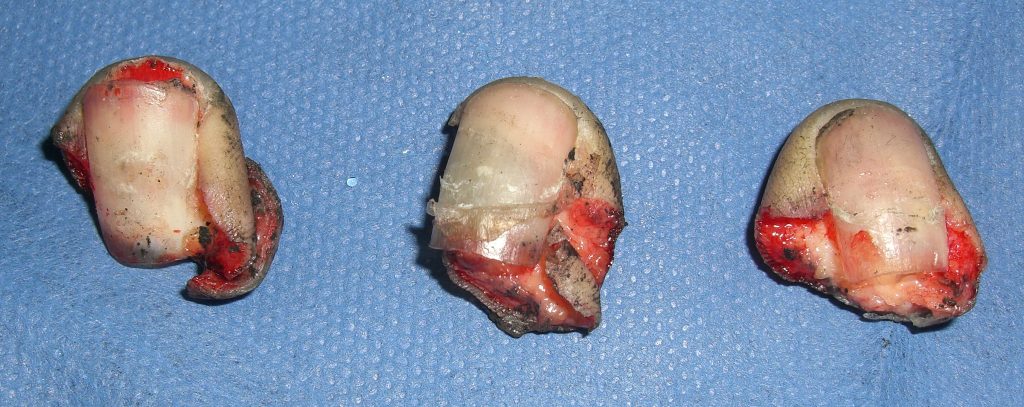 Findings:
Findings:
Fig.2. Avulsion fractures of the distal phalanx of the right index, long, and ring finger tips with injuries to the injured parts precluding microvascular reattachment.
Diagnosis:
Allen Type IV finger fingertip amputations of the right index, long and ring fingertips.
Differential Diagnoses:
Workup Required:
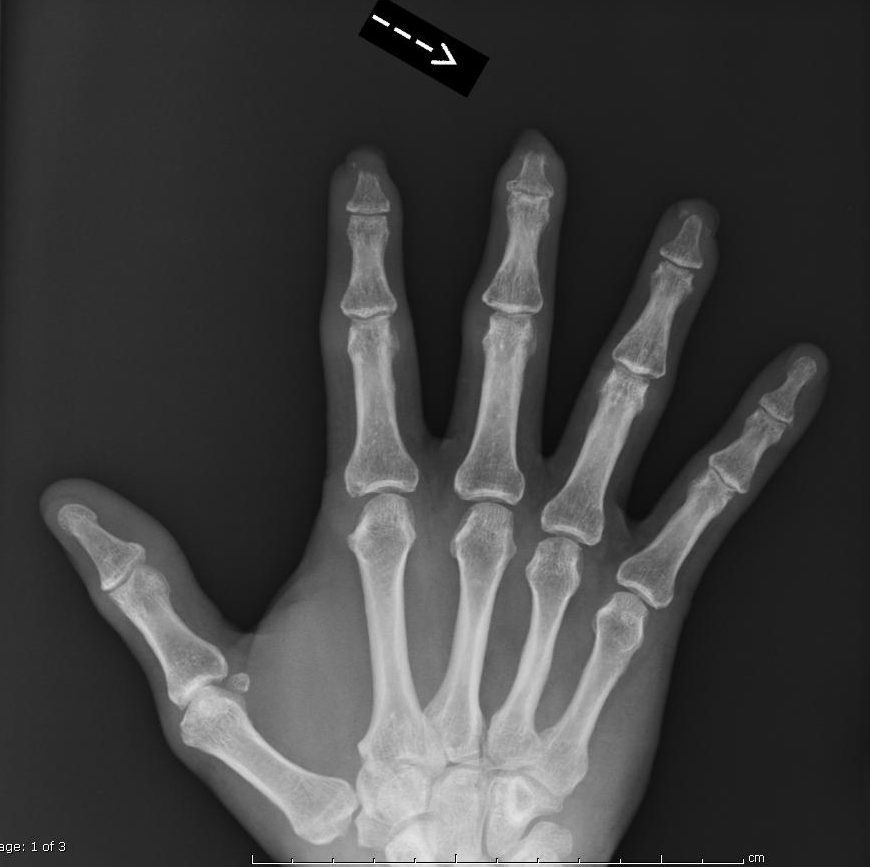
Plan:
Expertise Needed:
As fingertip injuries are amongst the most common hand injuries, these injuries are most often treated by a hand surgeon. Newer topical healing methods such as use of Extracellular Matrix wound care dressings (e.g.- UBM-ECM) is desirous as they promote M-2 vs. standard M-1 macrophage directed wound healing.
Treatment:
Alternate day application of 20 mg. UBM-ECM powder was applied to each fingertip with hydrogel applied on top of a petroleum impregnated gauze to maintain a moist environment.
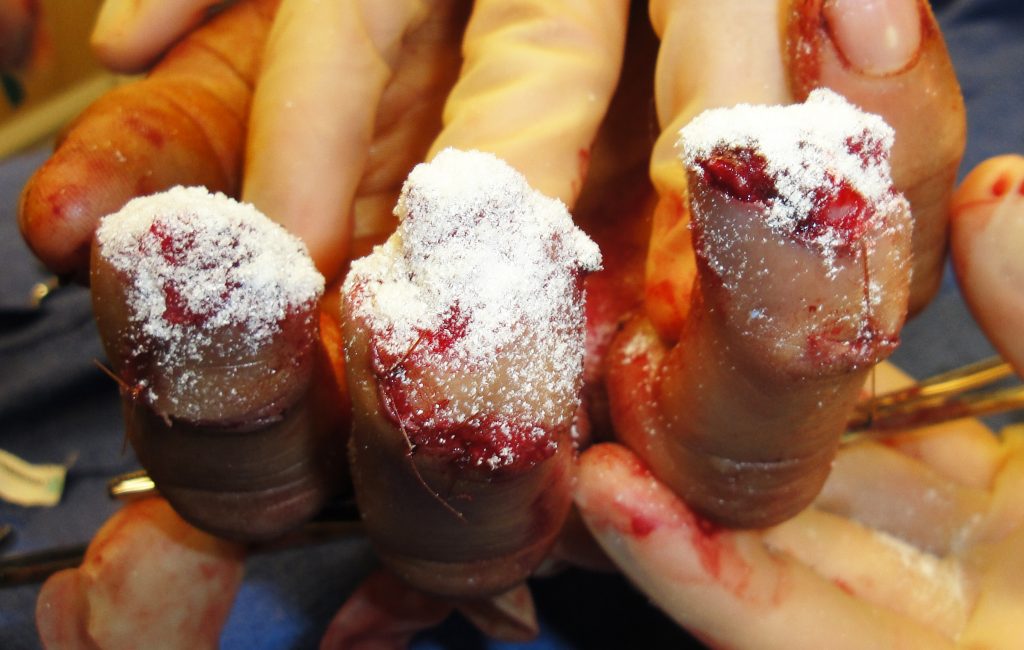
Fig.4. Fingertip appearance at the time of first application of UBM-ECM powder
Follow Up:
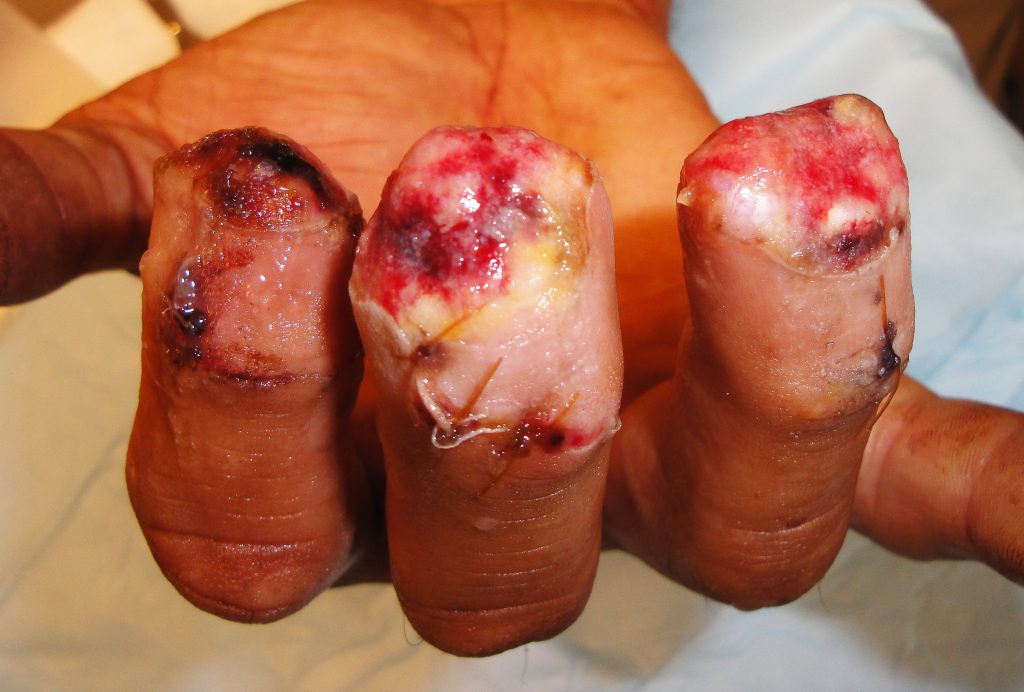
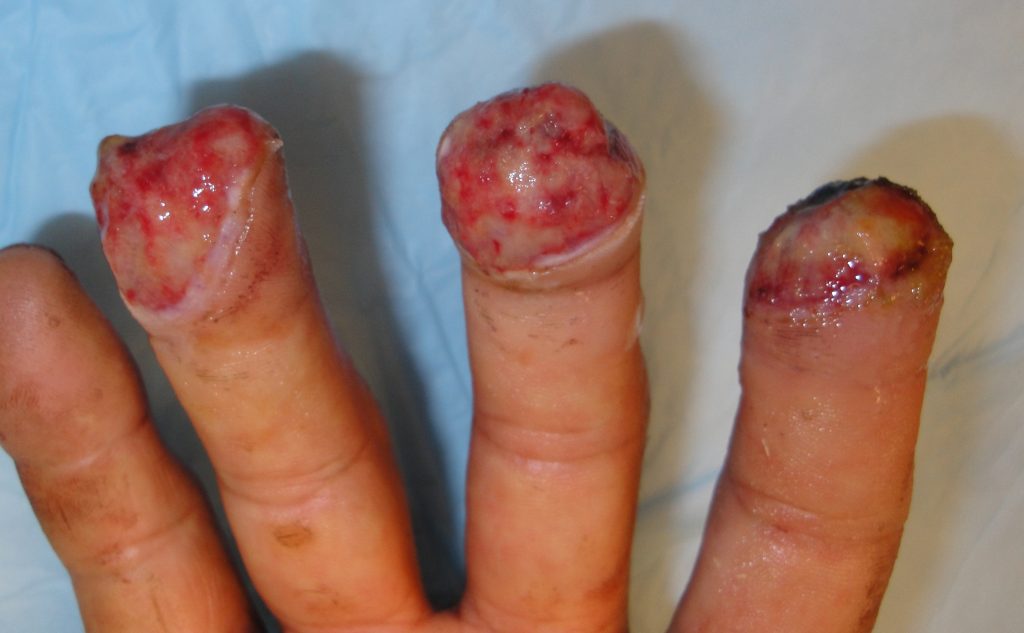
Fig.5. Fingertip appearance after the first week and 3 treatments
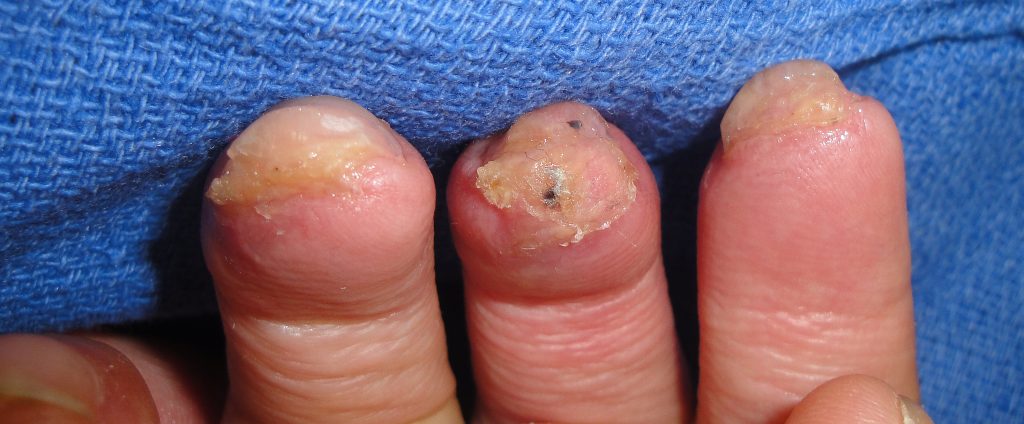
Fig.6. Fingertip healing at 2.5 months.
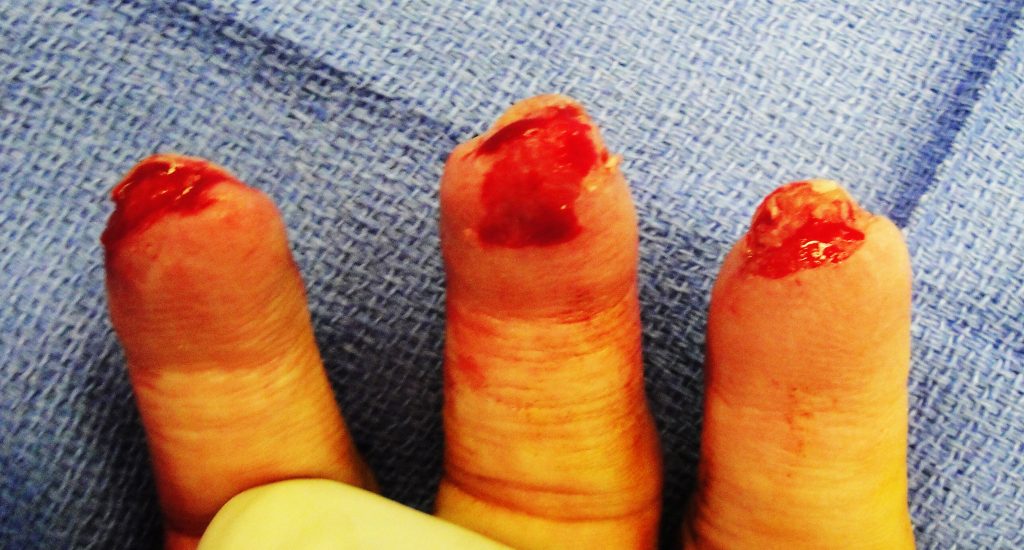
Fig.7. Fingertip appearance after debriding the thickened distal tissues and opening up the distal tips for placement of additional UBM-ECM powder.
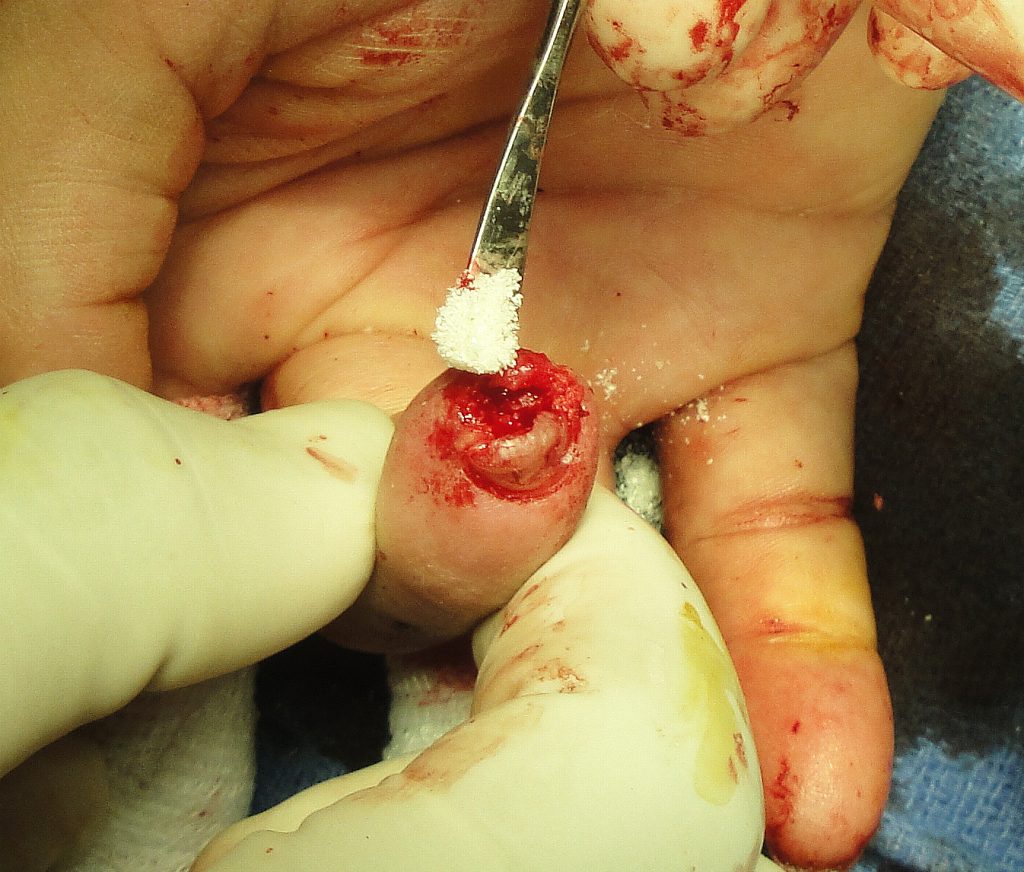
fig.8. After opening the distal fingertip- additional powder was placed under the fingernail and over the distal bone.

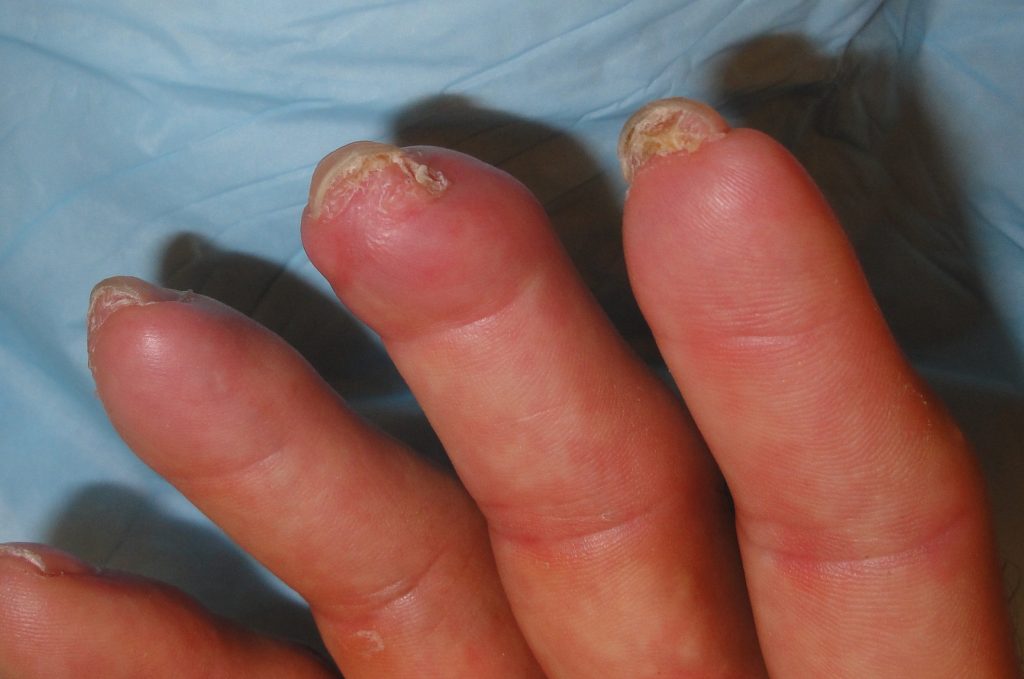
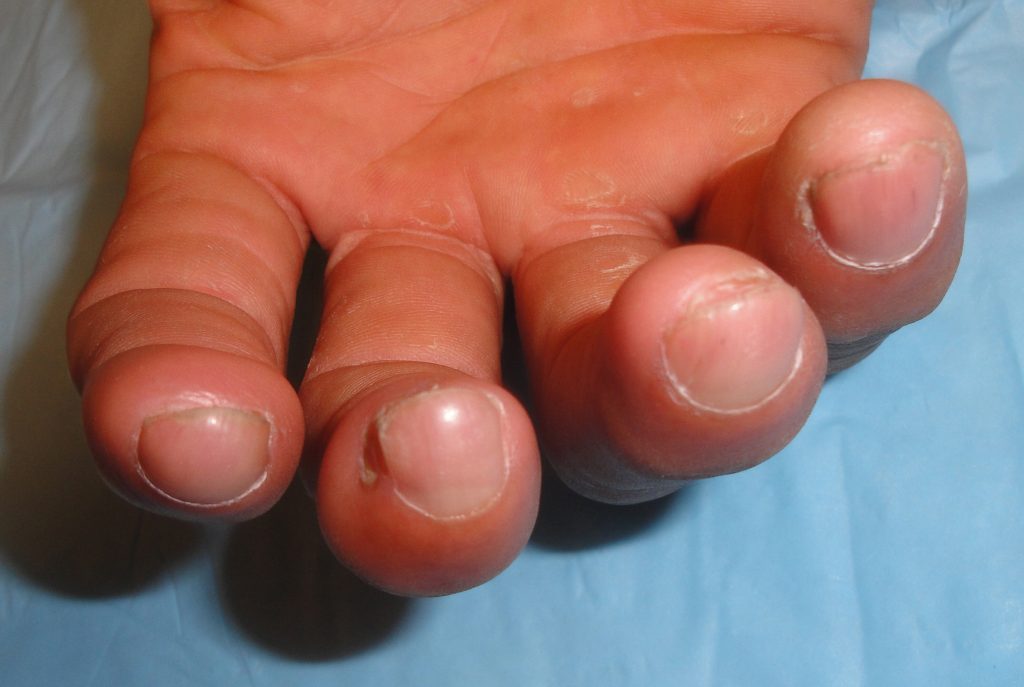
Fig.9. Fingertip Healing at 6 months post injury
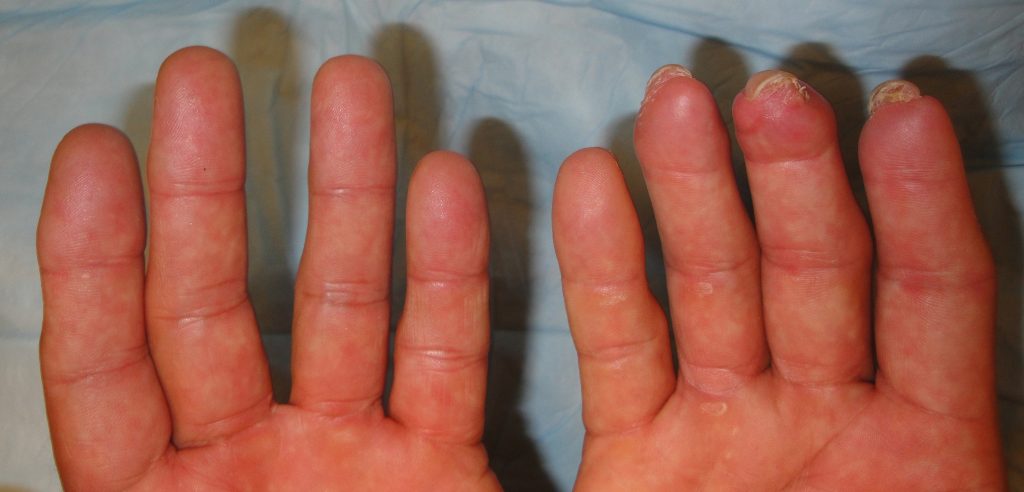
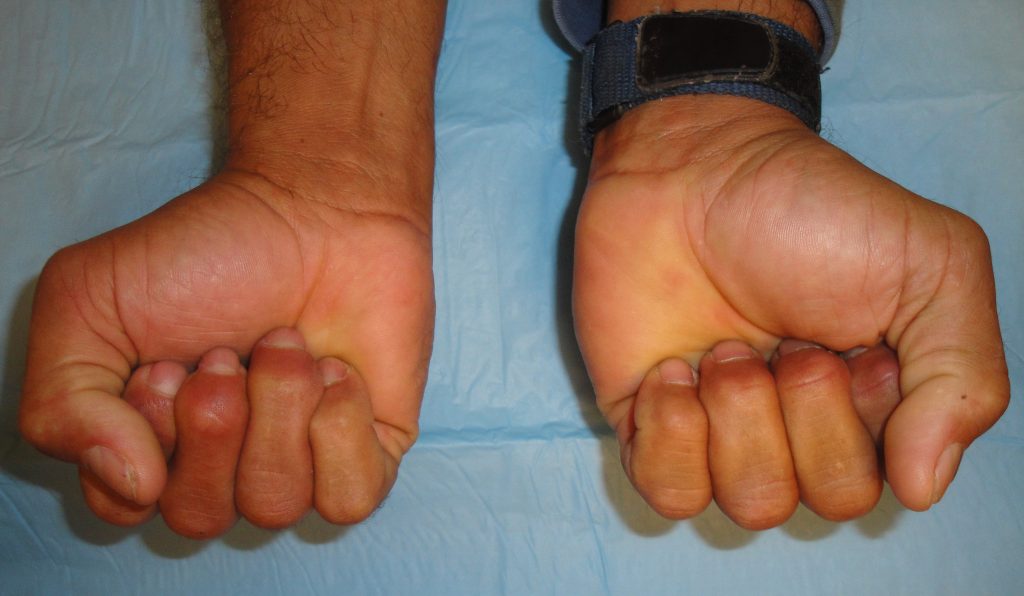
Fig.10. Fingertip appearance and comparison at 1 year post-injury.
The patient had stable healing and was able to resume his prior employment after 4 months.
